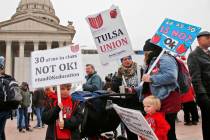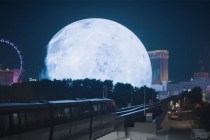AN ‘OPEN’ DISCUSSION WITH JR MOEHRINGER
 JR Moehringer spent most of two years in Las Vegas, working with Andre Agassi on his autobiography "Open." Moehringer, who won a Pulitzer Prize for feature writing in 2000, agreed to a Q and A with former Rocky Mountain News colleague Norm Clarke of Vegas Confidential.
JR Moehringer spent most of two years in Las Vegas, working with Andre Agassi on his autobiography "Open." Moehringer, who won a Pulitzer Prize for feature writing in 2000, agreed to a Q and A with former Rocky Mountain News colleague Norm Clarke of Vegas Confidential.
Here's the result:
Q: Anyone who’s read your 2005 New York Times best-seller, “The Tender Bar,” knows you grew up in Manhasset, NY, in that eccentric part of Long Island where F. Scott Fitzgerald set “The Great Gatsby.” At what age were you introduced to Fitzgerald and how much did he influence your growth as a writer?
A: I knew early on that this brilliant, glamorous writer once lived in our hood, and that he used it as the setting for his masterpiece. Then I read “Gatsby,” and reread it obsessively, and put Fitzgerald into my personal pantheon. But my pantheon is crowded. I worship and obsessively reread Hemingway, Bellow, Cheever, Salter, et al.
Q: When did you develop an interest in reading and writing?
A: At four years old I’d nag my mother relentlessly: When can I learn to read? Again and again she’d tell me: As soon as you start school. Then, on the first day of kindergarten, we did nothing but make paper dolls and dance the hokey-pokey. I felt devastated. Betrayed. I thought learning to read would be instant, like learning to tie my shoes, and that it would happen on Day One.
Q: You graduated from Yale in 1986 and your first job was with the New York Times as a copyboy. For what famous writers did you get sandwiches and coffee? And why did you then move, four years later, to Breckenridge, CO, of all places?
A: I fetched hoagies and hot coffee for the likes of Robert McFadden, the greatest rewrite man of his era, and Myron Farber, who’d spent 40 days in jail to protect a source, and Francis X. Clines, one of the loveliest newspaper stylists ever. It was a heady place, the NY Times of the late 1980s. But I was barely part of it. I was in a dysfunctional training program, which didn’t actually train anyone; it mainly frustrated and discouraged young writers, partly by turning them into caterers. After three-plus years I underwent a final review. The editors looked over what I’d written between food runs and told me I wasn’t good. And they were right. I made my way to Breckenridge, where I hung out with my cousin McGraw and a few ski bums, drinking generic scotch, playing hearts, sulking. After several months of that, in late 1990 I caught on at the Rocky Mountain News.
Q: Talk about the Rocky. What was your job description?
A: General assignment. I wrote about crime, politics, sports, books, science, nature, parades. Lots of parades.
Q: I was at the Rocky at the same time, working the big-league-baseball-comes-to-Denver beat. I recall that you tried out to be the second baseball writer during the inaugural season of the Rockies?
A: Yes. The executive editor liked me, and he ordered the sports editor to give me that tryout. But the sports editor didn’t want to. He wanted to hire one of his cronies. So he created an impossible tryout, making me cover the World Series from my apartment, filing fake dispatches -- no quotes, no color -- on a broken laptop. I fell flat on my face, just as he knew I would. At the time I was crushed. I thought being a baseball writer was the best job in journalism. Now I look back and nearly pass out from relief. The life of a baseball writer would have been bad for me. All that travel, all that nasty deadline writing.
Q: You stopped drinking around then.
A: I did. For many reasons. But reading and writing was at the heart of the decision. It became clear to me that, despite the myths, many of which surrounded my personal god, Fitzgerald, drinking and words just didn’t mix. Even if I went out for one measly beer after work, I had trouble focusing the next morning on a page of text -- either mine or someone else's. Plus, drinking demanded so much energy, money, and time, three things I didn’t have much of. I remember one last night of bar-hopping with you, which left me jelly-legged, followed by a mini-binge with that dedicated elbow-bender Bill Husted, and then I stopped. And I’ve never looked back. Maybe it’s superstition, or a certain respect for momentum, but I’ve always believed: if something is working, leave it be. And for me, thus far, not drinking is working.
Q: Give me the cliff notes of your LA Times years. I recall a marvelous story about a down-and-out boxer, Bob Satterfield, which they made into a movie. And how did you win your Pulitzer?
A: I got hired in 1994 to be a reporter in the LA Times Orange County bureau, which is a journalism gulag under the best of circumstances, but on my first day the whole county went bust. Biggest municipal bankruptcy in U.S. history. So there I was, day after day, writing business stories filled with numbers and decimal points. Hellishly boring. I felt so deflated, so lost, I applied for a position in the PR department at FOX. I didn’t get it. Another bullet dodged. After a year or so, the editors finally started letting me write the stories I’d been hired to write, narratives about flesh-and-blood people, including the boxer piece, which was a Pulitzer finalist. In 1997 they sent me to Atlanta to cover the south as a national correspondent, and I won a Pulitzer for a piece about the last place in America where descendants of slaves in great numbers still lived on the site of the old plantation: Gee’s Bend, Alabama.
Q: Where were you in your career when Agassi entered the picture? Were you back in Denver by then?
A: Yes, working for the Times, based in Denver, feeling the walls close in. As circulation nosedived, editors were saying publicly that they no longer saw the economic viability of narrative journalism. They were vowing to publish shorter stories, and more of them, with fewer writers. The future looked grim. Also, my immediate bosses were insanely enamored of a piece I was writing about the world’s oldest chimpanzee. He was the chimp from the Tarzan movies, and at seventy-something he was living in Palm Springs with his trainer, happily retired, receiving the occasional visit from Jane Goodall. Just ahead of his birthday I filed a quick-and-dirty feature, written in the chimp’s voice. I gave it 1,500 words, about what it deserved, but the editors wanted more. So I gritted my teeth and did a rewrite. Again they wanted more. Much more. I begged them to just run the damn story, leave me alone, let me get on with other things, but they were wild about that chimp. They wanted a massive takeout with sidebars and digressions about other Hollywood animals.Lassie, Trigger, Rin Tin Tin. And they ordered an elaborate photo shoot, as if we were Vanity fair and the chimp were Penelope Cruz. Let’s just say I was ripe for someone to come along and offer me a way out of daily journalism.
Q: When did you first meet Andre?
A: He phoned me in 2006, during his final U.S. Open, because he was reading my memoir. He invited me to come see him play. Alas, I was on assignment in San Francisco and couldn’t leave. So we got together weeks later at SW Steakhouse and he told me over dinner that he was contemplating an autobiography. A very different kind of autobiography. He asked if I’d be interested in helping. I said no. My plan was to hang on at the Times, hope for things to improve, write a novel. Also, I’d heard from too many sportswriters that helping an athlete with a memoir can be awful: the athlete invariably gives you no time, no access, and in the end he cuts everything of interest from the manuscript.
Q: How many times did you turn down Andre? Did Stefanie try to recruit you?
A: Countless times. He never took it personally. In fact, despite my repeated rejections, we became friends, and I came to understand that Andre was the real deal, that he meant what he said about doing a very different autobiography. In the end he was not only good to his word, he was better than his word.
As for Stefanie, no, she never got involved. At least not wittingly. Meeting her, however, getting to know her, helped me trust that Andre was every bit as genuine and goodhearted as he appeared. Otherwise a woman like Stefanie wouldn’t have chosen him.
Q: What finally changed your mind?
A: Andre can be mighty persuasive. And his story, the sneak preview he gave me of it, felt powerful, and universal. It struck me that finding a way to tell it could be a lot of fun, and a terrific adventure.
Q: When did you move to Las Vegas and what was the housing arrangement?
A: I moved here in 2007 and stayed in a house that Andre owned as an investment.
Q: How often did you and Andre get together? Word has it that you lived like a hermit?
A: Andre would come over every day, late morning, and we’d start off with a couple of breakfast burritos. Then we’d settle down in the living room, under a painting of Sinatra that Andre gave me as a present. (He knew I loved Sinatra, and one of his deepest regrets was growing up in Vegas and never seeing Sinatra perform.) I’d ask questions and Andre would answer into a tape recorder. No holds barred. We covered everything, and after a while we had enough material for three books. We shipped the tapes to a transcriber and she sent back a document thicker than "War and Peace.” From that giant block of text I carved out the first draft -- the first of nine -- which Andre and I then went over, and over, line by line, draft by draft, cutting, adding, shaping. Those were long days, as you can imagine, and when Andre left the house I was rarely up for hitting the Strip. I’d usually just go to the gym, then get something from Whole Foods, which I’d eat standing at the sink. But many nights Andre and Stefanie would drop off a plate of much finer fare on my doorstep. And of course they had me over to dinner too many times to count. They took good care of me.
Q: How many people did you interview in how many states?
A: I went to San Francisco and spent a long, wonderful day with Brad Gilbert. I went to NYC and spent a long, productive day with Brooke Shields. She was candid, gracious, extremely generous with her time and memories, and then many months later I spent a half day with her in Beverly Hills, going over the final draft. I went to Orange County and interviewed Andre's longtime friend J.P. I spent many hours with Andre’s parents, and his brother Philly. And of course I had the privilege of eating many lunches and doing many interviews with Gil Reyes, one of the two heroes -- along with Stefanie -- of Andre’s book.
Q: Did Mike Agassi have reservations about being interviewed?
A: None that I could see. He was quite eager to talk, as was Andre's mother Betty. Andre and I spent a hilarious Saturday at his parents’ house, listening to old stories, going through old boxes of photos and news clippings.
Q: There was a Mike Agassi story that you wanted to put in the book, but there wasn’t room.
A: Unbeknownst to Andre, Mike Agassi finagled a front row seat at a match against Sampras, and soon made his presence felt. While Sampras was getting ready to serve, Mike Agassi’s cell phone started to ring. Sampras stopped, annoyed, and turned. There, a few feet away, was Mike Agassi. Sampras couldn't believe his eyes. And still the cell phone kept ringing. Finally Sampras said: Aren’t you going to answer it? To which Mike Agassi barked: Shut the (expletive) up and serve the ball!
Q: You said Andre could have been Federer had it not been for Sampras. Go into that. And you mentioned that readers need to keep in mind that the book is written “in real time.”
A. Without Sampras, who could have stopped Andre? Clearly, in a Sampras-less world, Andre could have amassed many more slams. On the other hand, given how distracted Andre was at various times, how depressed, the question is whether he would have been motivated without an archrival. Andre has never liked things too easy, so it’s possible that without Sampras to push him, to make him focus, Andre might have grown bored and retired much sooner. As for Andre’s other rivals, yes, the book is written in present tense, and this simple device apparently isn't simple enough for a few people on the internet. They take Andre to task for saying unkind things about Chang, Connors, Sampras, et al., which couldn’t be farther from the truth. Andre and I chose the present tense for many reasons, but in particular because it allows Andre to put the reader right there, in the emotion of the moment. The story is told without hindsight, without retrospection; it's all impression, observation. You’re inside Andre's head, overhearing his thoughts, watching his consciousness evolve. He's not rendering any modern-day judgments about Chang or Connors or anyone else. He's describing fleeting, scattershot, often contradictory feelings about those guys and others in the heat of battle.
Q: Did Stefanie have reservations about the explosive stuff?
A: No. Stefanie’s only concern, from what I gathered, was how much time the book might require, how many hours it might take Andre away from the family. But even that concern quickly faded. Once we were under way, she was fully on board.
Q: What's been the most rewarding thing about this whole experience?
A: Getting to know Andre, becoming his friend. He’s a remarkable human being, a true gentleman. He’s been a tremendous source of inspiration to me. The way he treats others, the way he devotes himself to the betterment of others, the way he thinks each day about how he can do right by others, has altered my worldview, scraped away some of the cynicism that built up during my years in journalism. Also, with this book, he’s put so much on the line, risked so much, laid himself so bare, all for the sake of creating a book that will instruct and inspire and give hope to readers he’ll never meet—I find that kind of courage to be extremely moving. I think many fans connected with Andre the tennis player because he was often the overwhelmed underdog. You could see in his pained expression that he was scared, that he didn’t want to be out there. And yet he persevered. He mounted some astonishing comebacks against enormous odds. In a sense his whole career was an astonishing comeback against enormous odds. But to my mind this book is his signature act of courage.
Q: Your next project? Done with sports for a while?
A: I hope I'll never be done with sports. But I honestly don’t know what comes next. I haven’t decided what I want to write or where I want to write it. I only know that it’s going to be a novel.
Editor's note: you can follow Andre Agassi on Twitter @agassiandre
Moehringer's Web site is: http://www.tenderbar.com/author.htm









